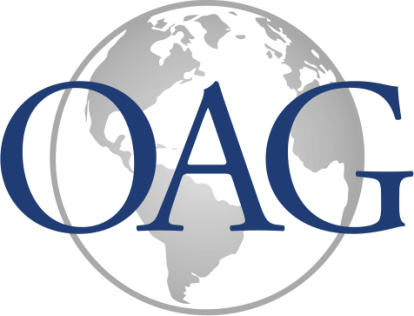It’s no secret that landlords have a propensity to overcharge tenants. In all fairness, lease language is not only confusing and ambiguous but can be difficult to administer across different tenants in a shopping center or office building. Many retail and commercial leases are rife with billing discrepancies, and occupancy costs need to be reviewed thoroughly.
A company's occupancy-related expenses, like common area maintenance, property taxes, insurance, repair & maintenance costs and utilities can easily fall off of a business’ radar when keeping tabs on all other operations data.
A Robin Hood for tenants
Founded in 1990, Occupancy Cost Audit Group (OAG) is one of the premier organizations specializing in occupancy cost audits. The growth and maturation of the company is reflected in company co-founder and Chief Financial Officer, Jim Daniel. Jim has played a critical role in building OAG from the ground up.
OAG works with clients to look back historically and review bills from their landlords against the leases to identify overbillings and recoup lost money. OAG helps enforce the terms of the lease through the work of its 40+ forensic auditors.
Status reports constantly out of date
OAG’s work is reliant on tracking the program process and claim process. Jim recalls keeping status reports of claims in Excel spreadsheets in the early days,
“You would maintain a status report, present it at a meeting and then a day later it was out of date again,” Jim lamented.
The problem only got worse as the company’s operations grew and processes needed to scale. As we started to carve our niche, we got more clients which resulted in more locations and the need for more auditors. Inefficient communication and no way to enforce standardization added to the challenges OAG was facing.
The company also needed auditors to be able to input data themselves to avoid errors and miscommunications. OAG wanted a dynamic system that would streamline auditing, reporting, project timelines, and collaboration. All of which would allow OAG to get through portfolios and report back to the client more effectively and efficiently.
In need of a custom solution, Jim decided he would try to learn to build a platform himself.
Finding the right solution
Determined to build a custom app that would meet OAG and its clients’ needs, Jim began his search by comparing Salesforce and Basecamp tools. However, neither fit his vision for a holistic solution.
Maintaining OAG’s overwhelming amount of data meant their needs were more robust than a basic database or sales management tool. OAG required a system that was not just a repository for all of the information related to more than 100,000 location records.
Jim envisioned a platform that provided real-time project tracking and customized dashboards for customers.
“We wanted the client to be able to just login and see a snapshot,” he stated, “We’re two thirds of the way along in the audit! ‘Oh, we're up to a million bucks’ or ‘We are up to 10 or 100 claims.’ They see the status of the project immediately.”
After vetting multiple vendors, Jim ultimately chose Quickbase to solve OAG’s problems.
He points out, “And if I could customize that software into what I needed it to be, and how I wanted to run the company – having the right people, building cool and meaningful reports, that’s what it was all about.”
Charting the course with a custom application
Using Quickbase, Jim and team began building COMPASS, which
stands for ‘computerized audit support system.’ COMPASS is a
three-dimensional, web-based database to track claims and audits for
OAG’s clients. With information at his fingertips, he can easily look up
how many claims are working, what the claims are worth, what the
potential revenue is, and so much more. The solution has over 20 years
of historical claims data to help OAG optimize their processes.
“Keep in mind we have hundreds of clients, so you can imagine the scale of this,” Daniel asserted, “Multiply the number of clients times the number of their locations times the number of audits we performed against those locations times the number of years we have audited. We're tracking those locations and the related audits against those locations every year."
In addition to the mapping tool, OAG integrated tax assessor websites into their audit records, so that auditors can pull tax records to verify that landlords have charged their clients properly. The combination of these tools makes it possible for OAG to overlay a tax parcel map on the location to audit more thoroughly and accurately. Each integration arms OAG with more data to return to approach the landlord on behalf of the client.
“The more fun things we can integrate into the solution like that, the more we can better serve our clients.” Jim states.
Maximizing value for clients also meant making the most of the investments OAG made in their own operations. For Jim, maximizing the COMPASS app meant partnering with Quickbase enablement services.
“I want to get the most out of this software,” Daniel says of seeking out enablement services, “Your developers and software folks are so much more advanced than those of us at the user level. I’m not a programmer. I don’t want to be. I want to be able to use all the features and functionality given to me to make the app better with the end goal of making our auditors more efficient and giving them more tools and more resources.”
Enablement services have enabled Jim to partner with Quickbase developers to craft the best possible app for OAG and maximize his investment in Quickbase.
Feeling the benefits from start to close
Thanks to COMPASS keeping track of annual audits, capturing core information, and building useful reports, OAG is able to store and manage all of this important data. What has this meant for OAG?
Since adopting Quickbase, audits are being completed 25% faster.
COMPASS is making the audit process more efficient and leading to larger findings. All of which are making clients happier.
It also showed the marketing potential.
“The proprietary software is a differentiator. It’s a great marketing tool,” he says, “We say, we can build you a custom dashboard so you can always pop in and check on the status of the audit in real time. That greatly reduces recurring status calls and web-meetings. It is so worth it to remove a number of status report conference calls and meetings off a calendar in a week or month. Everyone gets more of their day back.”
“By having so much historical information at our fingertips, the chances are we have already audited a particular shopping center many times over and we can pull up past audit reports to find out where we were successful. Nobody else can do that and that sets us apart.”
So what’s next for OAG? Jim says they continue to spruce up the app with more innovations and functionality, in partnership with the Quickbase enablement services team. “I'm invested in this partnership because I want to continue to build the business on it and to figure out ways to always grow and make it better. I see us as partners. I want us to be in this together. I want to work together for a lot of years.”
Jim Daniel had a vision for the organization, and no-code tools from Quickbase helped OAG achieve more than they ever thought possible.




